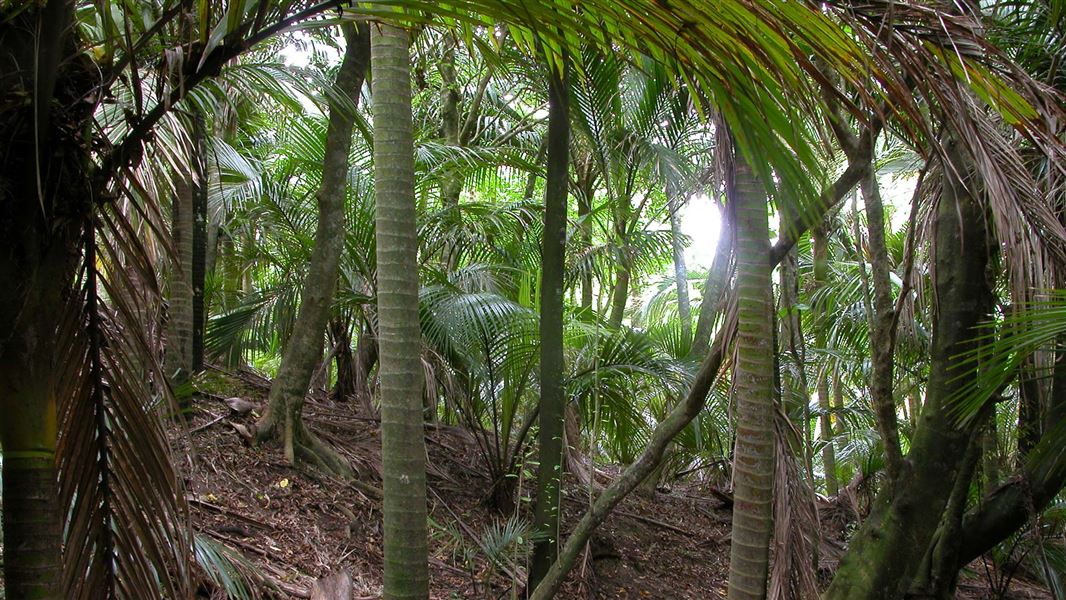Nga Hua o Mōrere hot springs
Nga Hua o Mōrere hot springs are at the main entrance to the Mōrere Springs Scenic Reserve. Normal hours resume on 16 December 2024.
Mōrere Springs Scenic Reserve is on SH2, 40 km north-east of Wairoa, 52 km south of Gisborne and 15 km north of Nuhaka.
Track safety
All track times are based on an average family group and are intended as a guide only. Actual times may vary depending on the weather and track conditions.
It is not advisable to access the tracks during wet weather conditions as they become slippery/muddy and there is a higher chance of a windfall/slips occurring.
Road safety
Take care around the carpark, entering and exiting, as the road can be busy, and visibility is limited especially near the bridge end.
Morere Springs Scenic Reserve is one of the last remaining tracts of coastal native forest on the East Coast. The dramatic shapes of nīkau palms feature throughout the reserve and black beech dominates the canopy on the drier ridges.
Other native trees that grow here include kohekohe, tawa, rimu, tōtara and mātai. The reserve is also home to abundance of birdlife, including tūī, bellbird, kererū and morepork – and you can hear a New Zealand falcon.
Due to the high ecological value of the reserve, pest control is undertaken to protect the flora and fauna from introduced animals and plants.
Information panels at the entrance describe the area’s history.
Mōrere Hot Springs thermal area and its associated rainforest reserve are steeped in history. The springs were called ‘Mōrere’ only from the late 1890s. The traditional Māori name was Ngā Wai Ariki o Ngati Rakaipaaka – the Waters of the Gods that belong to the Ngāti Rakaipaaka Tribe. It can be loosely interpreted to mean the “waters of life.”
A well-used track passed up beside the springs to a small lake called Maukanui which was renowned for its eels. Physical evidence of this early occupation by descendants of Kahungununu and Rongomaiwahine is present in storage pits and the remains of a pa. The main defensive pa near Mōrere is Moumoukai. It is on top of a 700 m high hill and there are few remains of this pā left due to erosion of the steep slopes.
This reserve was a source of natural healing waters, Kiekie (native vines) and other traditional materials used for raranga whariki (woven mats), kete (baskets) and rongoā (medicines).
The area is most closely associated with Ngāti Rakaipaaka and Ngāi Te Rakato but Ngāi Tama, Ngāi Tu, Ngāi Tarewa and Ngati Uaha also have connections.
In the late 1880s, most of the bush in the area was felled and burnt by European settlers to make way for pastoral farming but a few acres of bush around the hot springs were spared. In the early 1890s, the first totara-slab bath house was built by the main thermal outlet, and in 1923, the first permanent caretaker of the hot springs, Ned Kennedy, was appointed. There was a hotel next to the springs from 1897 which developed into a resort during the heyday of the 1920s and 30s and was popular as a tavern in the 1970s. Sadly, it was destroyed by fire in 1994.
DOC Customer Service Centre
| Phone: | 0800 275 362 |
| Email: | gisborne@doc.govt.nz |
| Address: | Tūranganui-a-Kiwa / Gisborne Office |
